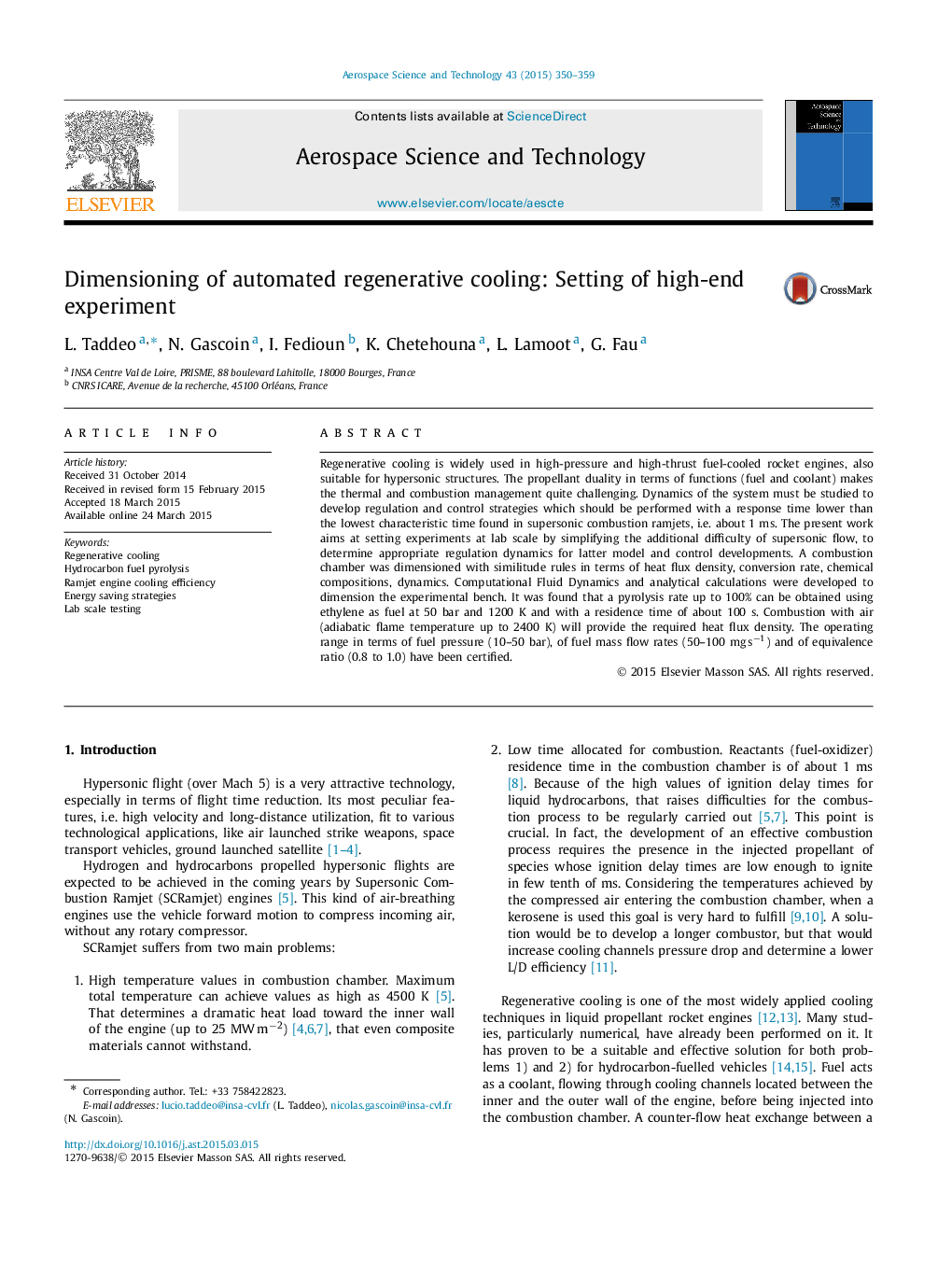| Article ID | Journal | Published Year | Pages | File Type |
|---|---|---|---|---|
| 8058994 | Aerospace Science and Technology | 2015 | 10 Pages |
Abstract
Regenerative cooling is widely used in high-pressure and high-thrust fuel-cooled rocket engines, also suitable for hypersonic structures. The propellant duality in terms of functions (fuel and coolant) makes the thermal and combustion management quite challenging. Dynamics of the system must be studied to develop regulation and control strategies which should be performed with a response time lower than the lowest characteristic time found in supersonic combustion ramjets, i.e. about 1 ms. The present work aims at setting experiments at lab scale by simplifying the additional difficulty of supersonic flow, to determine appropriate regulation dynamics for latter model and control developments. A combustion chamber was dimensioned with similitude rules in terms of heat flux density, conversion rate, chemical compositions, dynamics. Computational Fluid Dynamics and analytical calculations were developed to dimension the experimental bench. It was found that a pyrolysis rate up to 100% can be obtained using ethylene as fuel at 50 bar and 1200 K and with a residence time of about 100 s. Combustion with air (adiabatic flame temperature up to 2400 K) will provide the required heat flux density. The operating range in terms of fuel pressure (10-50 bar), of fuel mass flow rates (50-100 mgâsâ1) and of equivalence ratio (0.8 to 1.0) have been certified.
Related Topics
Physical Sciences and Engineering
Engineering
Aerospace Engineering
Authors
L. Taddeo, N. Gascoin, I. Fedioun, K. Chetehouna, L. Lamoot, G. Fau,
